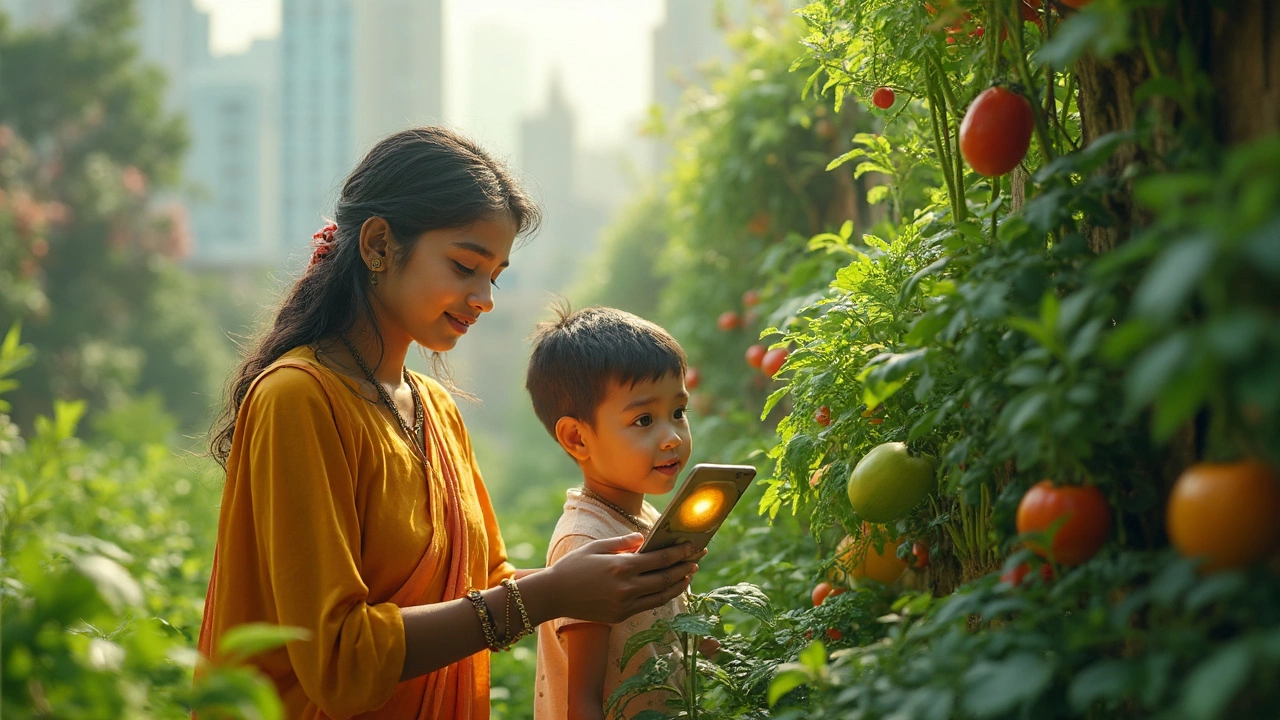Future Biotechnology: Where Science Meets Everyday Life
 May, 27 2025
May, 27 2025
Imagine getting medicine that works perfectly for you because it’s made for your DNA or eating a burger that never touched a cow. That’s not science fiction anymore—it’s real, and it’s rolling out faster than most people guess. Future biotechnology isn’t just about fancy labs or distant promises, it’s about things you’ll touch, eat, and even wear.
Biotech experts are already using tiny genetic scissors, called CRISPR, to fix illnesses before they even happen. This stuff sounds complicated, but the big idea is pretty simple: take control over genes, and huge problems like rare diseases, food shortages, or even pollution start shrinking fast. Curious how this might hit you personally? Some clinics in Asia now offer genetic checks to tell you which meds will actually work for you—no more playing guesswork with your health.
And here’s a tip: dipping your toes into biotech isn’t as hard as it sounds. You’ll probably eat beans tweaked for better protein or see “designer bacteria” cleaning up spills in your city within the next few years. The changes are happening right under our noses, so staying curious and up to date will help you spot what matters most—especially when biotech starts knocking on your door.
- Smarter Medicine: Personal Treatments and Gene Fixes
- Changing the Way We Eat: Sustainable Food Solutions
- Biotech in the Environment: Cleaning and Greening
- Everyday Life with Future Biotech: What to Expect
Smarter Medicine: Personal Treatments and Gene Fixes
Picture this: you walk into a clinic, do a quick DNA swab, and your doctor uses that info to pick the exact medicine and dose your body needs. This kind of tailor-made healthcare is called personalized or precision medicine. It’s not some wild idea—it’s already being tested in hospitals around the globe. In fact, since 2020, over 70% of new cancer drugs in the U.S. were made for specific genes or mutations, not just the general disease.
Let’s talk about gene editing, especially CRISPR. Scientists are now using this tech to “edit out” errors in your DNA. If you have a rare disease like sickle cell anemia, there’s a growing chance doctors can use CRISPR to fix the problem right at its source. In 2024, the first CRISPR-based therapy for sickle cell disease got the green light in several countries. Trials are underway for conditions like muscular dystrophy and some forms of blindness too.
If you want to keep up with what’s coming, here’s what’s big right now in future biotechnology and smarter medicine:
- Genetic testing – Direct-to-consumer kits like 23andMe let you peek at your genes from home. Clinics are starting to connect these results to real treatment plans, not just ancestry info.
- Bioprinting – 3D printing isn’t just for plastic anymore. Labs have printed skin, ear parts, even mini-livers for testing new drugs safely before using them on humans.
- Targeted cancer therapies – Some cancer meds only attack tumors with specific genetic markers, which means fewer side effects and better results.
Check out these actual numbers to see how fast things are changing:
| Breakthrough | First Approved Use | Current Patient Access (as of 2025) |
|---|---|---|
| CRISPR gene therapy (sickle cell) | 2024 | 5,000+ patients in trials and early treatment |
| Personalized DNA cancer drugs | 2018 | Hundreds of thousands worldwide |
| 3D-printed human tissue | 2022 (testing); not full transplant | Used in thousands of drug tests, skin grafts |
Sure, the costs can be steep right now, and not every country offers these treatments. But as more breakthroughs hit the market, prices could drop—just like they did with smartphones. If you have a rare genetic condition or a family history of tough-to-treat diseases, it may be worth talking to your doctor about upcoming clinical trials or new genetic screening options. Keeping tabs on this space isn’t just geeky—it could be life-changing.
Changing the Way We Eat: Sustainable Food Solutions
Food is getting a serious upgrade thanks to future biotechnology. If you’ve ever wondered what your burger will look like in five years, it might not come from a farm like you expect. Biotech companies today are making meat, milk, and even eggs straight from cells—no animals involved. For example, real chicken nuggets have already come out of bioreactors in Singapore’s restaurants, and lab-made dairy that tastes like the real thing is sold in US supermarkets. This isn’t sci-fi; it’s reality, and it’s ramping up quickly.
One big reason for all this? Regular farming uses a lot of land and water, and it pumps out a ton of carbon emissions. Lab-grown foods and gene-edited crops need less space and resources. Changing cow DNA, for instance, makes some breeds burp less methane, which directly fights climate change. Farmers in the US, India, and Brazil are already planting gene-edited soybeans that grow faster and resist pests, slashing the need for chemical sprays.
There’s more: scientists are working on super-crops—wheat that survives drought, rice with more vitamins, or potatoes that don’t rot as fast. A team in the UK grew tomatoes with extra vitamin D just by tweaking one gene. That means healthier food straight from the shelf, no crazy supplements needed.
If you want to support sustainable eating, check food labels for things like "precision fermentation" or "bioengineered ingredients." These signals show your meal was made with less waste and resource use. Trying plant-based or cell-based meats is another way to see what modern future biotechnology can make possible. It’s not just about eating green, it’s about making sure there’s enough good food for everyone, even with a booming global population.

Biotech in the Environment: Cleaning and Greening
Future biotechnology isn’t just about cool gadgets or high-tech medicine—it’s literally cleaning up our planet. Scientists have already designed bacteria that eat oil after spills, making disasters like Deepwater Horizon less deadly for oceans. These tiny helpers don’t stop at oil; some are built to break down plastic, turning yesterday’s bottles into harmless stuff in a matter of weeks, not centuries.
One wild example is a project in Japan, where researchers discovered a bacterium called Ideonella sakaiensis in a recycling plant. It can chew up PET plastics way faster than anything seen in nature before. This trick is now getting bottled up for use worldwide, aiming to tackle plastic pollution at scale.
Biotech plants are getting a green upgrade, too. Scientists have developed genetically tweaked poplar trees that pull toxic metals from the soil. This means land that was once too polluted for anything can be cleaned up naturally, without digging or burning.
You’ll even find engineered algae in some wastewater treatment plants. They suck up nasty chemicals from water and turn them into something useful, like biofuels. So that gross factory runoff could someday help power your car instead of wrecking rivers.
- Be aware of food labels—soon you might see products linked to cleaner farming, thanks to genetically smart crops that use less water or need fewer chemicals.
- If your city has green cleanup projects, ask how biotech is involved; there’s a good chance microbes are doing the dirty work behind the scenes.
- Want to cut your own plastic waste? Watch for future recycling bins using enzymes to break down packaging—drop in, break down, done.
The bottom line: as these biotech breakthroughs scale up, the way we treat trash, pollution, and even dirty water is changing for the better. Staying sharp on these shifts means you can spot new green solutions—maybe even in your own backyard.
Everyday Life with Future Biotech: What to Expect
You might not notice, but future biotechnology is slipping into your daily routine one step at a time. Grocery stores are starting to offer foods made with gene-edited crops. Think tomatoes that actually taste good or wheat with built-in vitamins. The big change? These foods are designed to last longer, offer better nutrition, and use less water to grow.
At home, expect smart gadgets that turn kitchen scraps into safe fertilizer using specially engineered microbes. Some laundry detergents already use enzymes made by biotech, cleaning better with less water and at lower temperatures. It’s all about saving time, money, and resources without you having to do anything extra.
Your doctor visits could soon feel much more personal. With DNA-driven health reports, your doctor might suggest foods, exercises, or even medicines that fit your body’s exact needs. A 2023 US healthcare survey showed that about 8% of patients have already been offered genetic-based treatment choices. The number is expected to double in just a few years.
If you’re curious what to look out for as future biotechnology becomes more a part of life, here’s a quick list:
- Groceries with gene-edited produce (check for “non-GMO but gene-edited” labels)
- Home tech using biotech bacteria to break down waste safely
- Personalized medicine based on affordable DNA tests at clinics
- “Green” cleaning products made by eco-friendly enzymes
- Wearable patches that deliver medicine through your skin
Here’s a simple look at where we stand with some biotech trends:
| Biotech Trend | Current Example | What’s Next? |
|---|---|---|
| Gene-edited crops | High-fiber wheat in US supermarkets | Vitamin-rich bananas in Africa |
| At-home biotech devices | Composters with engineered microbes | Smart bins that separate plastics using designer bacteria |
| Personalized healthcare | DNA-based reports for heart meds | Fully customized treatment plans for common illnesses |
What’s the takeaway? Future biotech is designed to blend in. It’s not about flashy robots or wild lab experiments—it’s stuff you use, eat, or trust to keep you healthy. Stay informed, check product labels, and don’t be afraid to ask questions. The future is closer than you think, and it’s going to make your daily routine a lot smarter.